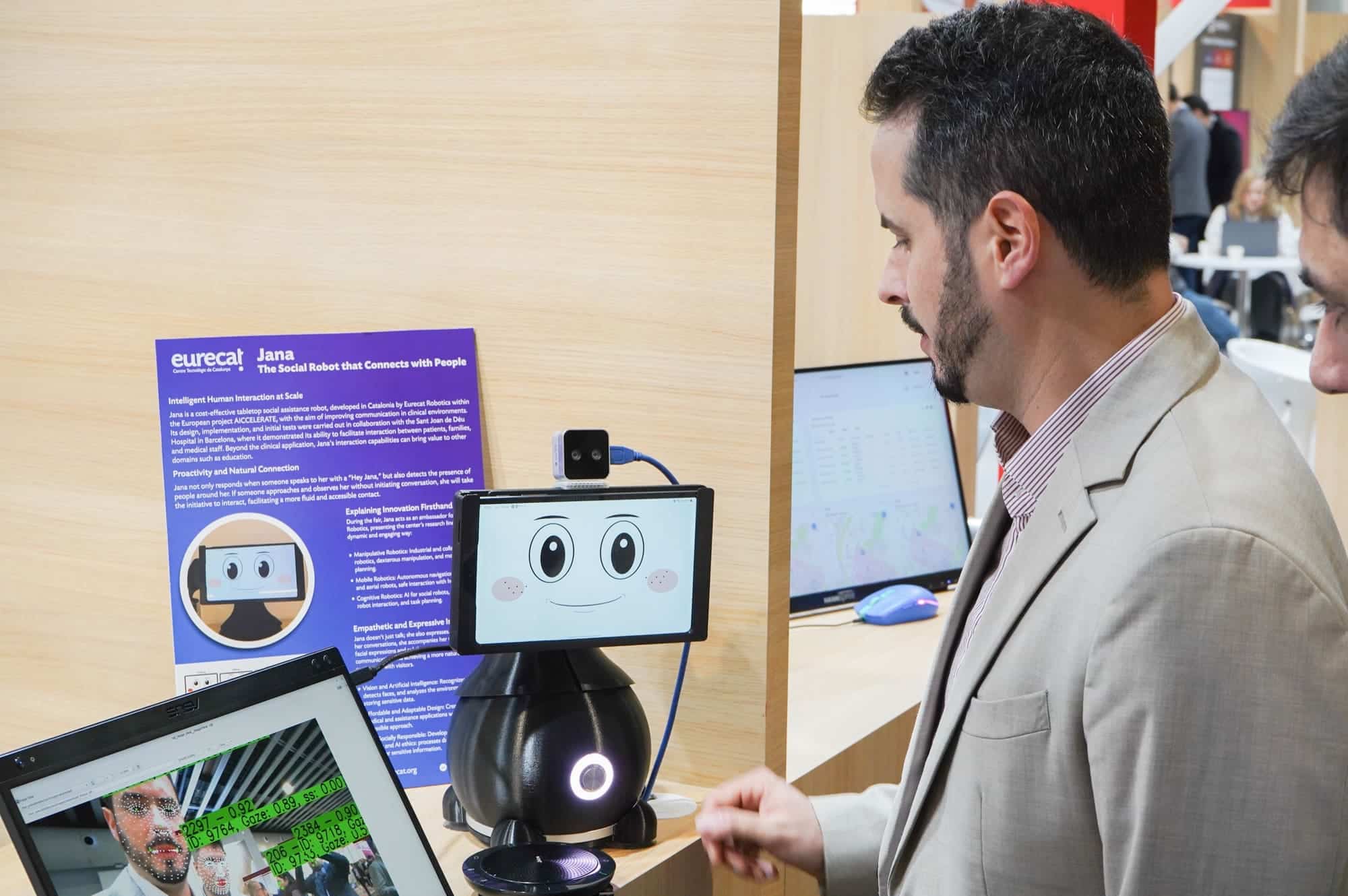A New Way of Interaction in Hospitals Thanks to Artificial Intelligence
Social robotics is making strides in healthcare with Jana, the innovative robot developed by Eurecat, designed to facilitate communication in clinical settings through facial recognition and artificial intelligence. Presented at the Mobile World Congress 2025, this robotic assistant interacts naturally with patients, families, and healthcare personnel, providing a more human and accessible experience in hospitals.
Developed as part of the European project AICCELERATE, in collaboration with the Hospital Sant Joan de Déu in Barcelona, Jana represents a significant advancement in the implementation of smart hospitals, where technology and healthcare converge to enhance patient care.
A Social Robot That Improves Communication in Hospitals
Jana’s ability to recognize faces and analyze the environment enables smooth and natural interactions with individuals. Thanks to its intuitive and accessible design, it can detect the presence of patients or healthcare professionals and initiate a conversation without the need for physical contact, which is especially useful in hospitals where workload and time constraints can hinder effective communication.
According to Daniel Serrano, director of the Robotics and Automation Unit at Eurecat, “Jana is a clear example of how social robotics and artificial intelligence can transform the way people interact with technology, humanizing innovation and bringing it closer to society.”
The design of Jana is based on accessibility and scalability, allowing it to be implemented in various healthcare environments without requiring significant investments in infrastructure. As Magí Dalmau, head of the Cognitive Robotics Line at Eurecat, points out, “an affordable and adaptable design has been chosen, intended for medical and supportive applications, with an accessible approach that can be scaled in the healthcare sector.”
Natural Interaction: How Jana Works
Jana has been designed to intuitively interact with people. When someone approaches, the robot can initiate a conversation or respond to the voice command “Hey Jana,” thus facilitating communication with users.
Additionally, the robot not only responds with words but also accompanies its responses with facial expressions and subtle movements, enabling it to establish a more natural connection with patients. As Federica Loizzo, researcher at the Robotics and Automation Unit at Eurecat, explains, “Jana is capable of expressing herself, using gestures and movements that reinforce communication and allow for a closer and more understandable interaction.”
Another key aspect of its design is the privacy and ethics of artificial intelligence. Jana processes data without storing images or sensitive information, thereby ensuring compliance with safety standards in clinical environments.
A Model for the Future of the Smart Hospital
The development of Jana is part of the AICCELERATE project, a European initiative that integrates artificial intelligence and autonomous robotics to promote a more advanced and efficient hospital model. Within this framework, the Hospital Sant Joan de Déu in Barcelona has been a key partner in the implementation and validation of the robot, conducting initial tests that have allowed for the assessment of its impact on the experience of patients and healthcare professionals.
The presence of Jana in the hospital has demonstrated its potential to improve interaction between patients and medical staff, providing information, guiding users within the facility, and offering additional support in clinical communication.
Jana at the Mobile World Congress 2025
Eurecat will present Jana at the Mobile World Congress 2025, at the Congress Square (stand CS210, space 43, Digital Catalonia), where attendees will be able to learn firsthand about the robot’s functionality and its impact on healthcare.
The Eurecat team will be available to answer questions and provide live demonstrations, showcasing how artificial intelligence and robotics can humanize medical assistance and improve the hospital experience.

